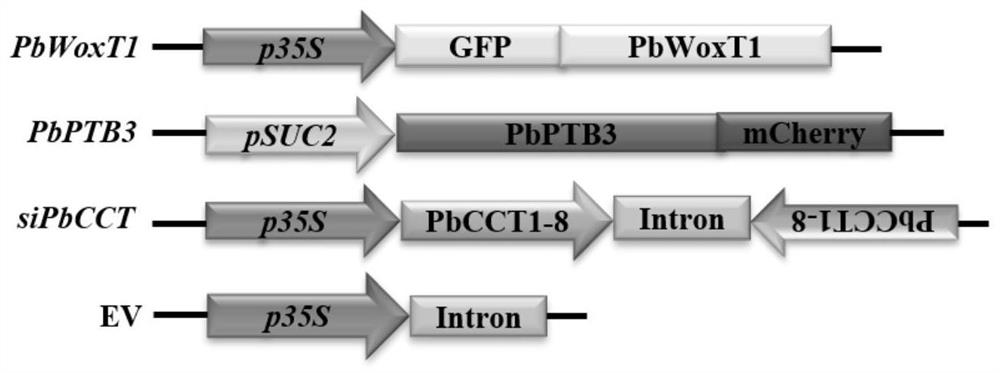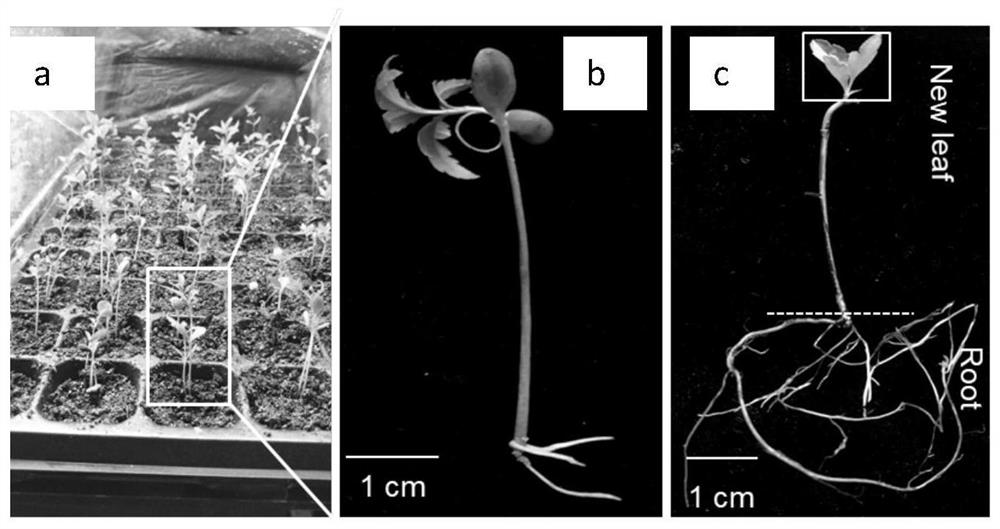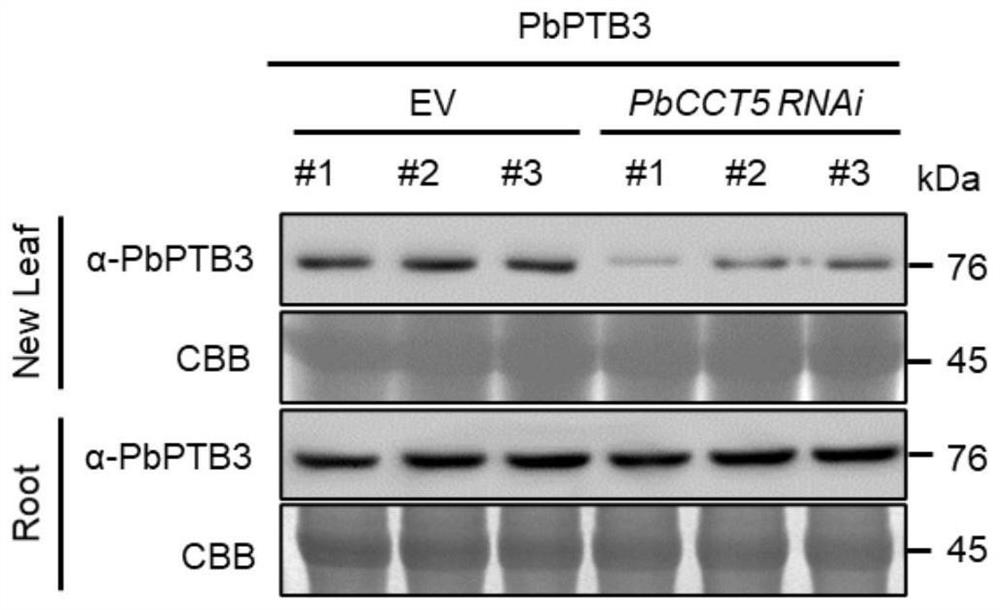Chaperonin for enhancing RNP signal communication of plant phloem and application
A technology of chaperone protein and phloem, applied in the fields of application, plant peptides, plant products, etc., can solve the problem of low transport efficiency of macromolecular RNP complexes
- Summary
- Abstract
- Description
- Claims
- Application Information
AI Technical Summary
Problems solved by technology
Method used
Image
Examples
Embodiment 1
[0111] Embodiment 1 chaperonin gene sequence acquisition process
[0112] 1. Extraction of RNA from the phloem of Du pear
[0113] In order to amplify the full-length sequences of the ten genes of PbWoxT1, PbPTB3 and PbCCT1-PbCCT8, the CTAB method was first used to extract the phloem RNA of Du pear. The specific steps are as follows:
[0114] (1) Preheat CTAB at 65°C, add 20 μL β-mercaptoethanol per 1 mL;
[0115] (2) Grind the sample in liquid nitrogen, take 0.5 g of the sample and put it into a 2 mL RNase-free centrifuge tube, add 1 mL of preheated CTAB, vortex for 30 seconds, and bathe in 65°C water for 10 minutes;
[0116] (3) Add 1mL CI (chloroform:isoamyl alcohol=24:1), and vortex;
[0117] (4) Place in a pre-cooled 4°C centrifuge at 13000rpm for 10min;
[0118] (5) Take the supernatant, add an equal volume of CI, and mix gently;
[0119] (6) 13000rpm in a centrifuge at 4°C for 10min;
[0120] (7) Take the supernatant, add 2 times the volume of isopropanol, and keep...
Embodiment 2
[0153] Example 2 Application of chaperonin-assisted protein phloem long-distance transport
[0154] 1. Vector construction ( figure 1 )
[0155] Taking the core protein PbPTB3 on the RNP complex that can transport long-distance phloem as an example to illustrate the specific application of chaperones. Primers were designed, enzyme sites were added to PbPTB3 through one PCR amplification, and constructed on the pCAMBIA1305 vector; each subunit fragment of the chaperone protein CCT was added with different restriction sites through two PCR amplifications, and the forward and reverse sequences were constructed into on the pFGC5941 vector. The primer sequences are as follows (the first pair of primers and the second pair of primers of PbCCT1-PbCCT8 are respectively the primers of the first PCR amplification and the second PCR amplification):
[0156]
[0157]
[0158] It was detected and recovered by agarose gel electrophoresis, and double-digested with pCAMBIA1305.1 and ...
Embodiment 3
[0236] Example 3 Application of chaperonin-assisted mRNA phloem long-distance transport
[0237] 1. Vector construction ( figure 1 )
[0238] Taking mRNA PbWoxT1 on the RNP complex capable of long-distance transport in phloem as an example to illustrate the specific application of chaperones. Design primers for PCR amplification and add enzyme cutting sites to the above recovered products. The primer sequences are as follows:
[0239]
[0240] 2. Plasmid Extraction
[0241] With embodiment 2.
[0242] 3. Agrobacterium Competent Cell Transformation
[0243] With embodiment 2.
[0244] 4. Genetic Transformation of Agrobacterium rhizogenes
[0245]The above-mentioned vectors PbCCT5 RNAi and pSUC2:GFP-PbWoxT1 were transferred into the Agrobacterium rhizogenes K599 strain respectively, and the 1-2 cm stems of the aboveground part of the pear seedlings with the size of 2 weeks were injected together. After 2 weeks, new roots grew at the injection site. Positive strains wer...
PUM
 Login to View More
Login to View More Abstract
Description
Claims
Application Information
 Login to View More
Login to View More - R&D
- Intellectual Property
- Life Sciences
- Materials
- Tech Scout
- Unparalleled Data Quality
- Higher Quality Content
- 60% Fewer Hallucinations
Browse by: Latest US Patents, China's latest patents, Technical Efficacy Thesaurus, Application Domain, Technology Topic, Popular Technical Reports.
© 2025 PatSnap. All rights reserved.Legal|Privacy policy|Modern Slavery Act Transparency Statement|Sitemap|About US| Contact US: help@patsnap.com



